To deal with large-sized tires and rough terrains during mountain biking, you should be equipped with a mountain bike saddle that is top of the line. A perfect combination of innovative fitting so that the saddle conforms to your body shape and functionality will help to set these saddles apart from other saddles. A typical mountain bike seat can be dissected into its typical parts:
i) The shell; ii) Padding; iii) Cover material; iv) Perineum cut-out/channel; v) Nose; and vi) Rails. All these factors should be taken into consideration whenever you are looking to purchase a saddle specific to mountain biking, in addition to the width of the saddle, which correlated to your pelvic bone width. While there is no better alternative than actually trying one out, in this article we will explore how we can find the best width for your mountain bike saddle.
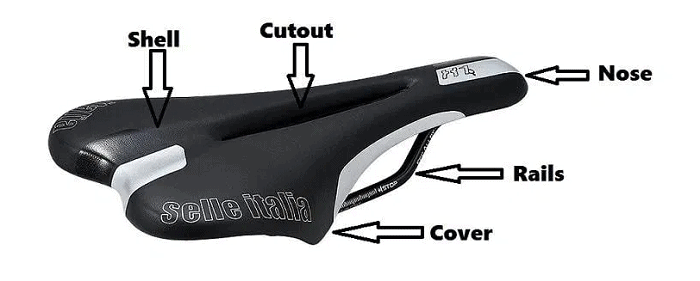
I. MTB bike types:
- Cross country/XC bikes: These bikes are performance-focused, but compromise on weight as well as pedaling efficiency. They are more suited to uphill climbing.
- Trail bikes: These mountain bikes come with thick tires for extra grip so that they can be used for both uphill and downhill travel. They can be used on all kinds of terrains thanks to their perfect balance of durability, rolling resistance, and traction.
- Downhill mountain bike: They are designed to be used on terrains that are typically rough and steep, where riders have to go over obstacles, rock gardens. Jumps and long drops are part of such terrains too.
- Enduro bikes: These bikes are equipped with the technical capabilities of a DH bike with the durability of a bike used for trail riding. They can go up climbs efficiently while allowing riders to come down with the highest confidence.
II. The types of saddles available for MTBs.
The typical design of a mountain bike saddle comes with a nose that is slanted downwards, with a more pronounced rear end to support the pelvis of a mountain bike rider. With longer bike frames, saddles found on mountain bikes have their heads stacked at an angle. This will leave you to ride in an upright position. This alters how the rider’s weight is distributed over the support surface of the saddle. Mountain bike riders have to make use of high- capability gears when involved in activities like climbing uphill. The high cadence does keep the rider planted to his / her seat, but this comes with the drawback of early discomfort. This is why the mountain bike saddles are designed to keep riders as comfortable as possible, like MTB saddles that come with a cut-away or use gel to act as a cushion for your rear end. Noseless MTB saddles are popular too since mountain biking requires a lot of hard pedaling which is one of the main reasons why the inner thighs of riders are subjected to chafing. A narrow or no nose design will get rid of this issue.
III. Covering, padding, chassis & rails of the saddle.
While you are mountain biking, the seat under you is being subjected to a lot of abuse. It is affected hugely by factors like pressure, friction, sweat, and moisture – amongst others. This is why manufacturers prefer to include tougher seams in combination with sturdy and long-lasting cover materials in the architecture of typical mountain bike saddles. They tend to have a bit more reinforcements like Kevlar patch or some other material besides microfiber or synthetic leather to cover the sides – so make sure that the saddle has side protection and lasts longer.
The shell is what gives the MTB saddle its structure where the foams and rails are attached. As we move to the amount of padding that should be used on the seat of a mountain bike, large amounts of padding will not be of much help if you are on the heavier side of the weighing scale. More than enough padding cannot offer the support rider’s need while mountain biking as the foam/padding warps under pressure in the long run. Typical padding materials used are gel and foam.
Carbon fiber is a lightweight and stiff option for rails of such saddle, where there are additional reinforcements in case of failure. If metal rails are being considered, titanium or Chromoly rails that have been custom-made can be the budget choice in terms of rails. However, they tend to weigh more.
IV. Shape, size & fit
If we look at the wavy structure that runs from the rear end of an MTB saddle to the front, we can make some key observations about mountain bike seats too.
Flat saddles typically do not feature any raised or lowered areas throughout their axis. Perfect for riders who are flexible and want to maintain upright and leaned riding positions. No matter how you are riding – you will be able to make to and from changes with utmost convenience. Waved saddles, on the other hand, are sloping towards the center while the rear end is ramped. To get the width of your MTB saddle, you will need to measure how far apart are the widest points on the saddle, as illustrated by the diagram above. The typical profiles that we can see in terms of width on a mountain bike seat are shown below. Even though the ideal shape of a bike saddle would be broad and large, they are rarely found on mountain bikes. On the contrary, thin and narrow saddle profiles are preferred for trail riding. This is helpful to shed off some weight and improve pedaling efficiency. If you are looking for a solution that can help you with technical descents or gripping around corners during enduro racing – narrow MTB saddle profiles will serve all purposes. Narrow nose with a wide back – mountain bike saddles are offered as variations of these two factors.
➥ Moreover, for your convenience, here is a comprehensive guide on the differences between mountain and road bike seat height.
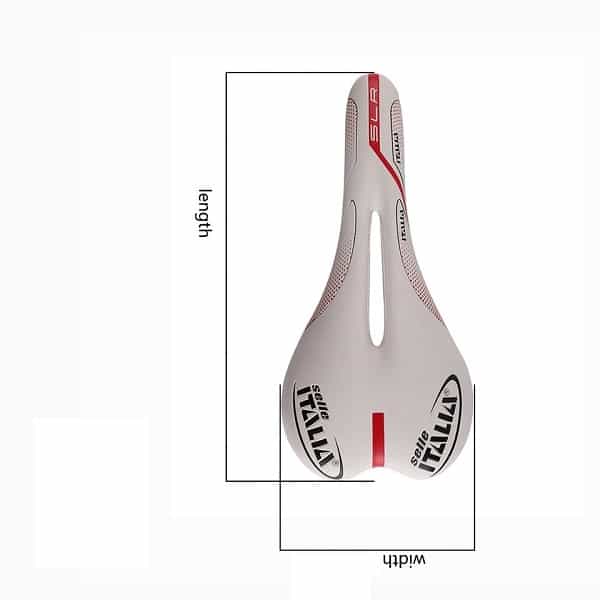
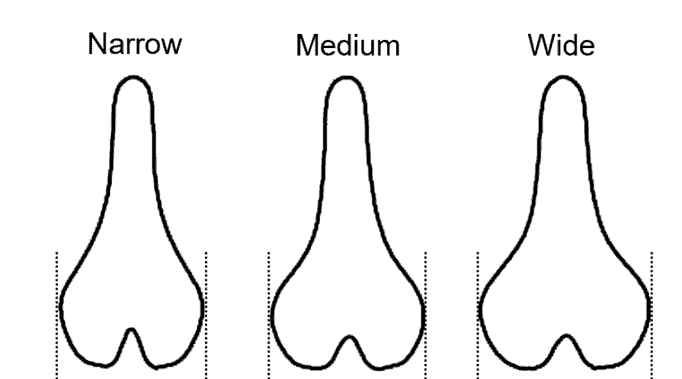
Climbing is better suited for saddles that are longer because you can shift forwards slightly on a long MTB saddle to balance weight distribution. As a result, more weight can be focused on the front wheel while the minimal weight on the rear will help to maintain grip. This is the perfect technique for XC racing on very steep climbs. On shorter MTB saddles, the nose is not so narrow. As a result, riders can shift forwards to add more pedal power. The advantage to this forward saddle position is no additional pressure is exerted on the sensitive tissues.
To get the width of your seat bone, follow the process outlined below:
Kitchen foil will need to be placed on a stair that has been carpeted. You will need to place your end on top of the foil and take up a position that shows you are leaning forwards a little to match your riding position. Follow this up by lifting your feet. This should leave a rather good impression on the aluminum foil, where the distance between the two deepest grooves will give the width of your sit bones.
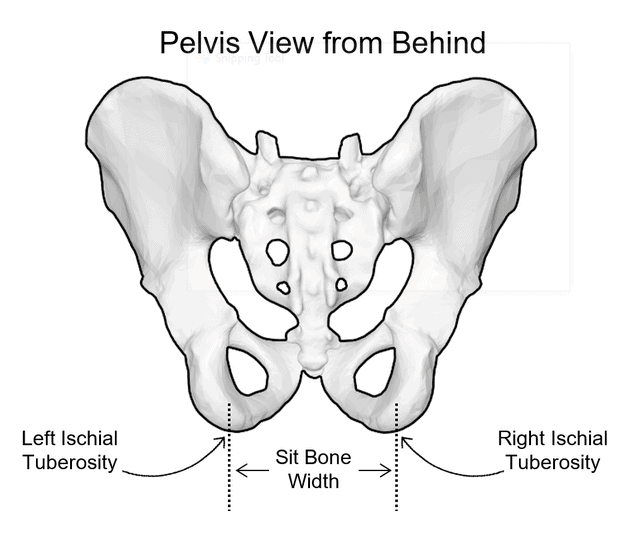
- If you are riding in an upright position or your pelvis is tilted backward very often – it is a good idea to go for a saddle that is 30mm wider than your SBW. This is likely to keep you more comfortable.
- With a forward-leaning riding position or if your pelvis comes forward while riding, a 20mm additional width will need to be added to get the ideal saddle width here.
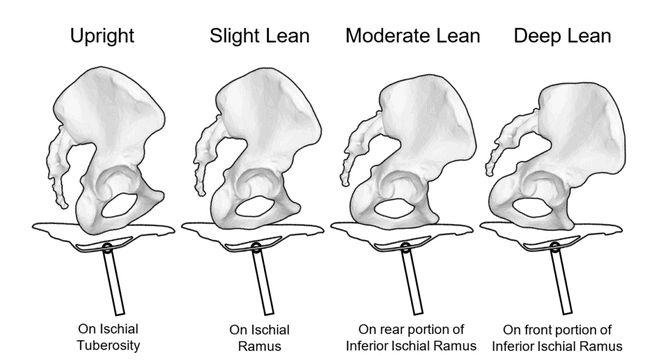
V. The importance of positioning & flexibility for MTB bike saddles
Being an MTB rider, if you lack flexibility you will face a few issues while you are seated on the saddle. Thanks to reduced rotation of your pelvic bones, you will shift around more on the seat. The entirety of your pelvic bone and lower back will “rock” forwards, exerting more pressure in the region of your perineum. Therefore, saddles that have a greater amount of padding in this area suits less flexible riders better. They can further avoid the numbing sensation on this soft tissue by selecting a saddle for their mountain bike that has a much more rounded profile or a large center cut-out. On the other hand, a flexible mountain bike rider has a greater ability to rotate their pelvis. There is no scope of pressure buildup in the perineum, and blood flow is fairly constant even if they tuck into an aero position while riding. Their spine has more curvature, which requires more rear cushioning and support. Women display better pelvic flexibility than men while on the saddle. This is why their pelvis tends to rock in a forward direction. This is why we find “ramps” on mountain bike saddles for women so that even if they are in a forward-leaning position, power distribution is not compromised.
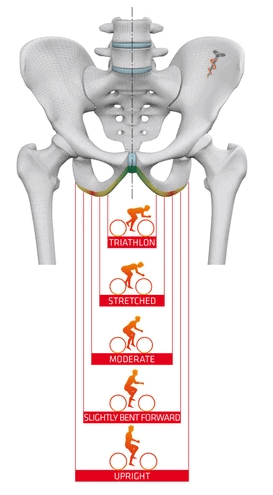
The areas of the pelvic bone that have been identified with red markers in the picture are supporting the weight of the rider. Their capacity to handle huge loads and pressure can be put into use while riding. With a more dynamic riding position, the point of contact moves further towards the center of the perineum area and pubic bone.
Women experience more pressure due to their low pubic arch as they placed forwards on the saddle due to their flexibility as they ride in a dynamic position. In this forward riding position, the weight of the rider should be supported by the pubic bone too. As we see both the sit and pubic bone come together to form a “V”, a riding position that is dynamic to a much larger extent needs a narrow saddle. With a more upright riding position, the effective width is larger. The pelvis and the spine should be in their natural position, and should not be forced by the flexibility of the rider’s body to go into one that is uncomfortable.
With a wider arch for the pelvic bone, women cannot use the narrow saddles typically found on saddles designed for men. The saddle and the pelvic bone are much closer, and the “sit bones: can actually be placed outside the supportive area of the saddle. Higher pressure is exerted on the nose thanks to the lower profile. This is why saddles designed specifically for women have an ergonomic design for maximum comfort. The seats are just the correct amount of firm and forgiving. The firmness will hold the female rider in place and minimize any movement whatsoever. The next thing to look at would be the narrow nose design with no chafing. Such saddles also have cut-outs or relief channels so that they can take up a forward position thanks to the added flexibility. However, this shoots up the pressure as the surface area has decreased. In the figures below, you can first identify how the male and female pelvic bones vary from each other. The second picture illustrates how manufacturers have resorted to women-specific saddles in recent times.
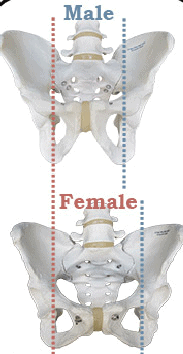
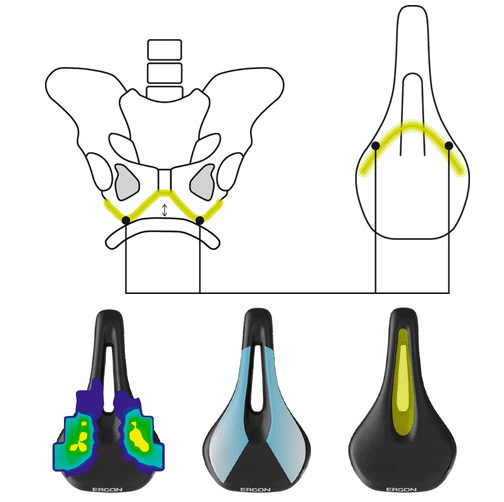
Size general width guide for MTBs
We have used the following chart to illustrate how variable sit bone widths are suited to different styles of riding.
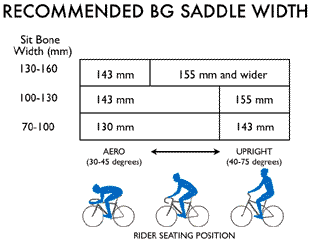
Frequently Asked Questions
Q1. Can you put a wide seat on a mountain bike?
Ans.: The typical width we see on Mountain bike saddles are different from what is found on other bike types. Mountain bike saddles generally use smaller material so that they can maintain a rather narrow saddle profile. This is a great advantage especially on trail sections that technically challenge mountain bike riders. Also, wider seats result in more chafing along with increased friction whenever the rider is pedaling too much – a scenario faced regularly during mountain biking. The saddle should not get in the way at all.
Q2. Is a wide bike seat more comfortable?
Ans.: If you are using a wide bike seat, then your choice should justify the type of riding you intend to do. As wider bike seats create too much interference, manufacturers have designed wide bike seats with lots of padding that facilitates easy and convenient pedaling. These can keep you comfortable while going for long rides and will dampen the effect of shocks and bumps from the road too. Many mountain bikers settle for saddles that are too soft. They are more likely to become uncomfortable after extensive riding. As the muscles of the rider adjust to the padding, if it is too soft – the padding thus fails to support the area for the seat bone anymore. This exerts more pressure on the perineum. The soft padding will chafe while pedaling, leading to more discomfort. With little or no padding, the benefits outweigh the drawbacks. With the correct shorts on, this combination is surprisingly comfortable.
➥ However, well-balanced padding can make mountain bike saddles more comfortable.
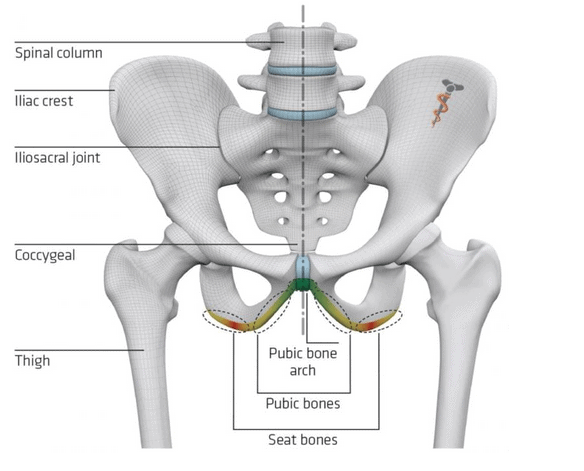
Q3. Why do my sit bones hurt when cycling?
Ans.: If you are hunched down to a low and are position for a short period of time, or going on for longer periods – you will have to brace the Sadler’s rear end. As a result, your back, shoulders, and neck will load up while exerting more pressure on your wrists and hands. This would lead to unwanted pressure points on the pelvis bones directly.
Another issue could be the hyper-extension riders exhibit while riding. In such a case, their pelvic bone is rotated forwards by such a large extent that there is no support for the abdominal muscles of the rider anymore. This lack of use of the abdominal muscles will overwork the muscles in the rider’s neck, arm, and back. He/she will brace themselves on the handles of the bike and push more of their weight on the bones of the pelvis. Additionally, studies have found that such cases will result in balance issues with their lateral muscle so that they will “sway” sideways by a lot. As a result, the bones of the pelvis will be under uneven pressure.
➥ We have a full guide on this topic: Where Should the Sit Bones Be On a Saddle?
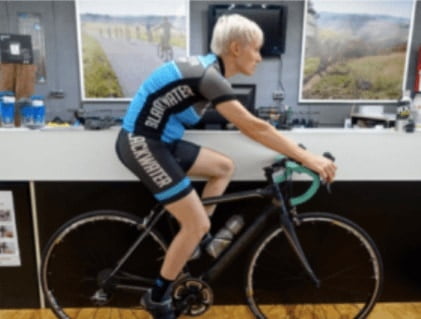
Q4. What is the ideal position for your saddle for mountain biking?
Ans.: To set the height of your mountain bike saddle, make sure that your knees do not bend fully. While your knee will be bent slightly, make sure that you do not extend it through its whole length. Doing so, place your foot flat on the pedals. This would be the ideal height. When the saddle in your mountain bike is at a lower height level than the handlebars, this is likely to result in discomfort in your sit bones. The reasoning behind this is in this position, as a rider you will attempt to extend your legs more by going deep in your saddle – therefore focusing more of your overall body weight on the bones you are sitting on. This riding position will limit your visibility, and you may fly off the saddle while braking hard and fast.
➥ Wrong saddle fitting is a source of many cycling-related injuries; from a knee injury to chaffing and rubbing problems. We have made a guide on bike saddle fitting, where you can get a perfect saddle fit just in six easy steps.
On the other hand, when the position of the handlebars is too low – riders will find themselves hunching over more frequently. This can even lead to their backs being over-extended and exert more downward/backward pressure. The ideal MTB saddle height will let you sit upright. If you are riding in an XC MTB position, the height of the saddle’s midpoint should be at the same level as the grip on the handlebars. For XC aggressive riding, the drop of the saddle to the grip should be in the range of 2 to 5 cm.

Conclusion
While cover material, rail, padding are amongst the factors that can be chosen as per the preference of users – the width of your mountain bike saddle is dependent only on the width of your sit bones. Whenever you have the opportunity to carry out test runs before purchase, please do so. Keep trying them until you find the correct one because once you get it, you will have a hard time letting it go.
